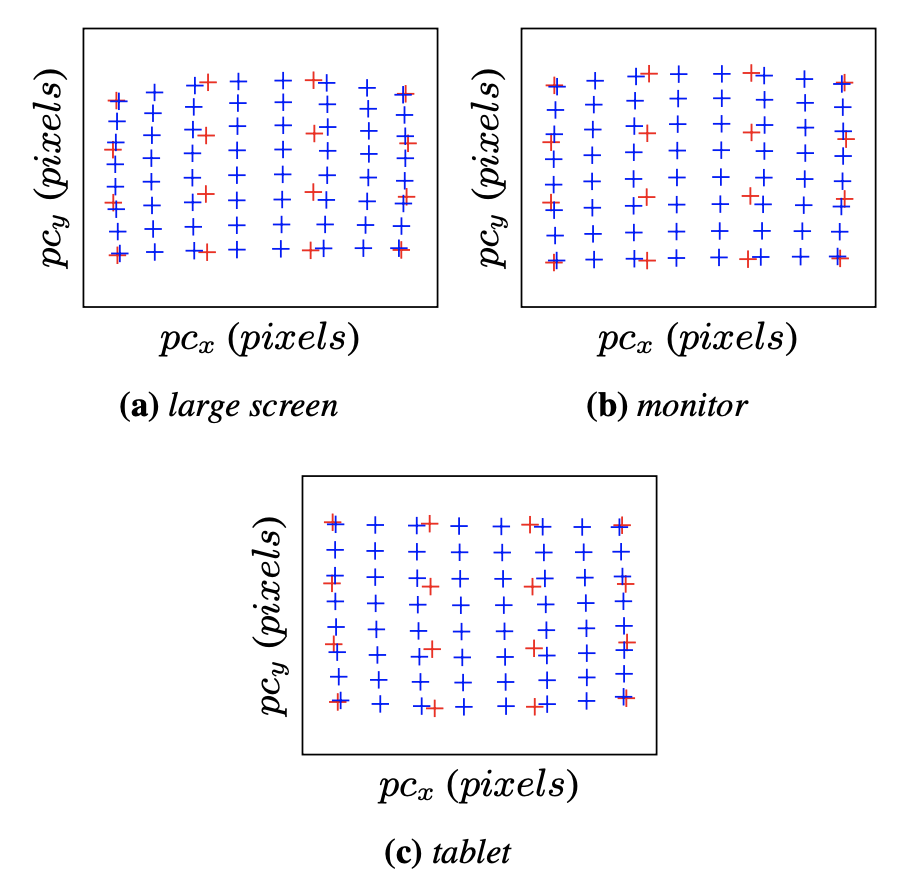Gaussian Processes as an Alternative to Polynomial Gaze Estimation Functions
Laura Sesma-Sanchez, Yanxia Zhang, Andreas Bulling, Hans Gellersen
Proc. ACM International Symposium on Eye Tracking Research and Applications (ETRA), pp. 229-232, 2016.

Abstract
Interpolation-based methods are widely used for gaze estimation due to their simplicity. In particular, feature-based methods that map the image eye features to gaze, are very popular. The most spread regression function used in this kind of method is the polynomial regression. In this paper, we present an alternative regression function to estimate gaze: the Gaussian regression. We show how the Gaussian processes can better adapt to the non-linear behavior of the eye movement, providing higher gaze estimation accuracies. The Gaussian regression is compared, in a simulated environment, to the polynomial regression, when using the same mapping features, the normalized pupil center-corneal reflection and pupil center-eye corners vectors. This comparison is done for three different screen sizes. The results show that for larger screens, where wider gaze angles are required, i.e., the non-linear behavior of the eye is more present, the outperformance of the Gaussian regression is more evident. Furthermore, we can conclude that, for both types of regressions, the gaze estimation accuracy increases for smaller screens, where the eye movements are more linear.Links
Paper: sesma16_etra.pdf
BibTeX
@inproceedings{sesma16_etra,
author = {Sesma-Sanchez, Laura and Zhang, Yanxia and Bulling, Andreas and Gellersen, Hans},
title = {Gaussian Processes as an Alternative to Polynomial Gaze Estimation Functions},
booktitle = {Proc. ACM International Symposium on Eye Tracking Research and Applications (ETRA)},
year = {2016},
pages = {229-232},
doi = {10.1145/2857491.2857509}
}

